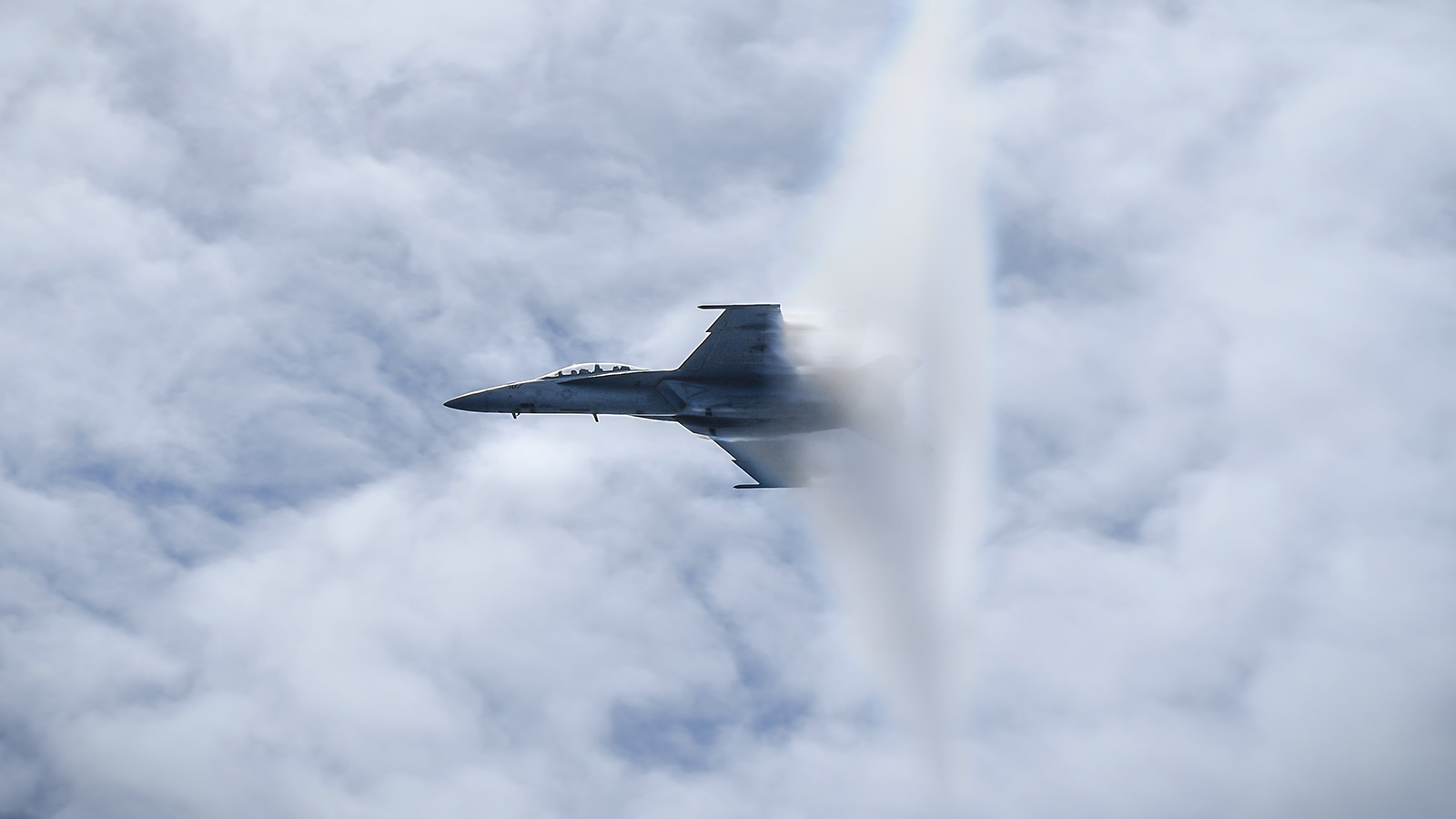Stay Up to Date
Submit your email address to receive the latest industry and Aerospace America news.
NASA makes noise reduction a priority over lower emissions
If NASA’s planned supersonic X-plane manages to reduce sonic booms to publicly acceptable thumps, the next steps toward supersonic passenger jets would be to reduce takeoff and landing noise and resolve an even thornier issue: As these planes race through the stratosphere, they could damage the ozone layer and spew carbon that would contribute to climate change, scientists caution.
For purposes of the thump research, NASA and its contractor, Lockheed Martin, plan to propel the X-59 to Mach 1.5 with a single General Electric F414 engine, the kind that powers F/A-18F fighter jets. There is no room for emissions research in the $500 million spending plan through 2025, and in October NASA plans to pledge to Congress that it will live within that figure. To put the $500 million in context, the proposed fiscal 2019 budget for NASA’s Aeronautics Research Mission Directorate is $790 million.
“There’s only so much budget, there’s a lot of different priorities,” said NASA’s Peter Coen, manager of NASA’s Commercial Supersonics Technology Project, which is funding the construction of the X-59.
Once the test flights conclude in 2025, “we’ll turn our attention more to the investment required to address some of the other barriers,” including emissions, Coen said. “The good news is a lot of the technology that you’re seeing in the new generations of subsonic engines is applicable to the design of a supersonic engine.”
NASA has discussed cleaner supersonic engine concepts with companies including General Electric, Rolls-Royce, Pratt & Whitney, Coen said, and has discussed improved jet engine fuel injectors with Colorado-based aircraft parts maker Woodward.
Technologies that could reduce emissions for supersonic airliners include the variable cycle design developed by GE for the U.S. Air Force. These engines alternate between a high-thrust mode and high-efficiency mode by channeling more air through the fan into the engine combustor.
“That’s not available for the commercial market, but when it comes time to do a design of a supersonic airliner and a new engine, then maybe it will be,” Coen said of GE’s Adaptive Cycle Engine.
NASA has researched the environmental impact of supersonic aircraft for decades, but funding has been sporadic as interest in supersonic airliners waxed and waned, said Bruce Anderson, the head of the NASA Langley Aerosol Research Group Experiment, which studies atmospheric aerosols and aviation’s impact on the environment. “It seems like there has been less and less emphasis on evaluating the impacts of aviation on the environment,” Anderson said. “Because people complain about noise, that’s the number one issue.”
He said supersonic airliners could emit more carbon into the atmosphere because of afterburners that inject extra fuel into the engine combustor for more thrust and would also emit pollutants including nitrous oxides and white contrail clouds of soot and water vapor.
“Nitrous oxides emitted have a long lifetime, and at certain altitudes you get the destruction of ozone,” Anderson said, referring to the ozone layer that shields Earth from some of the sun’s radiation.
“Water vapor is also a greenhouse gas and has a longer lifespan in the stratosphere,” he said. These contrails accelerate the greenhouse effect by insulating the sun’s warmth within the atmosphere. “Water vapor is very difficult to eliminate coming out of an engine.”
NASA in 2014 also began funding MIT’s Laboratory for Aviation and the Environment to create models that simulate how fleets of supersonic commercial airliners emitting those pollutants could impact the environment. MIT research scientist Ray Speth told me “it will probably be a year or so before we have results relevant to the currently evolving discussion on supersonics.”
In the U.S. Navy photo, A Navy F/A-18F Super Hornet breaks the sound barrier over the aircraft carrier USS Theodore Roosevelt during a demonstration in the Pacific Ocean on May 3, 2018.
About Tom Risen
As our staff reporter from 2017-2018, Tom covered breaking news and wrote features. He has reported for U.S. News & World Report, Slate and Atlantic Media.
Related Posts
Stay Up to Date
Submit your email address to receive the latest industry and Aerospace America news.




